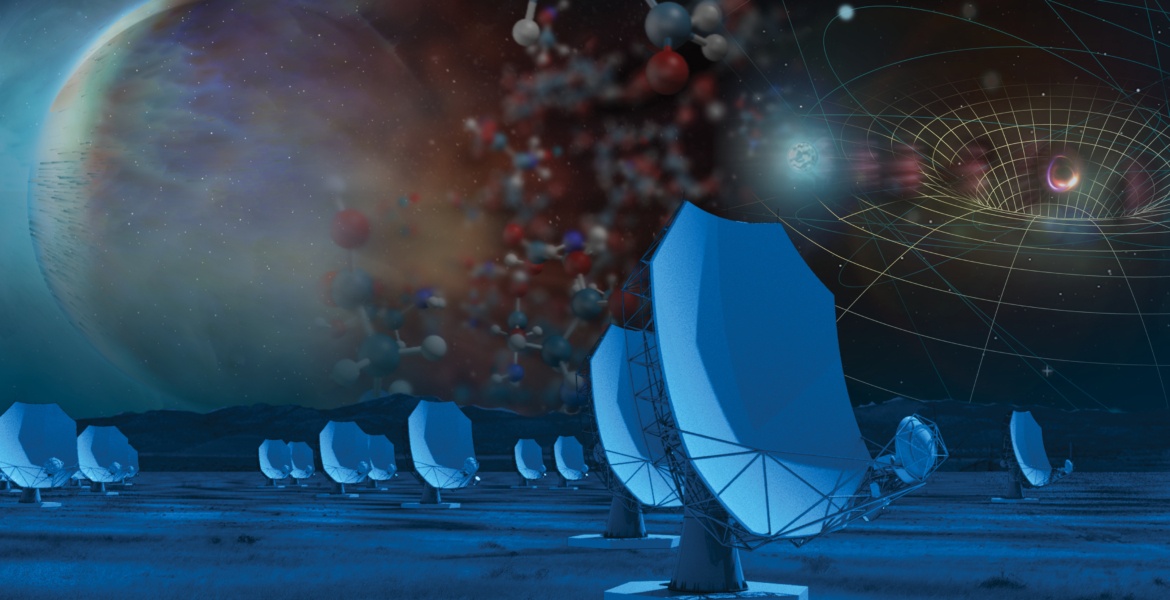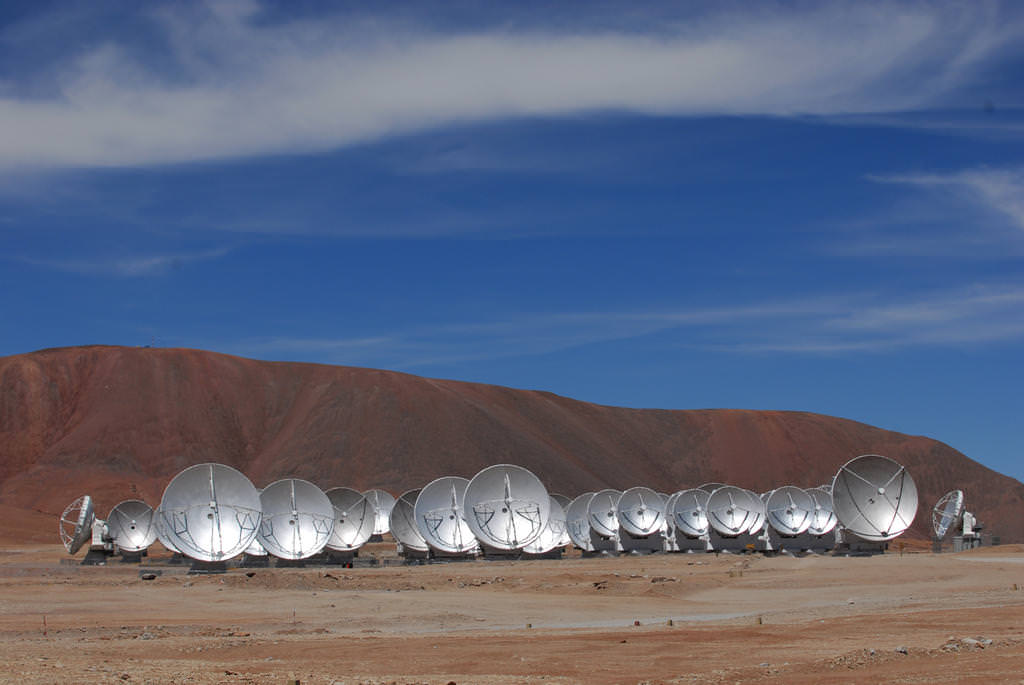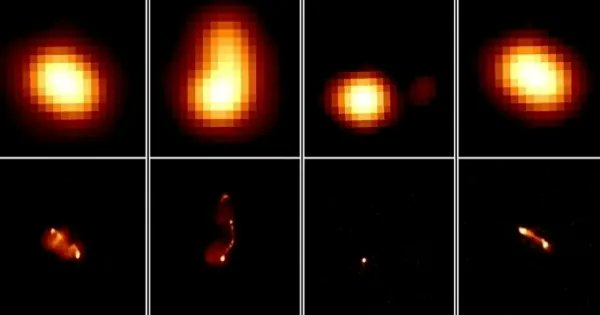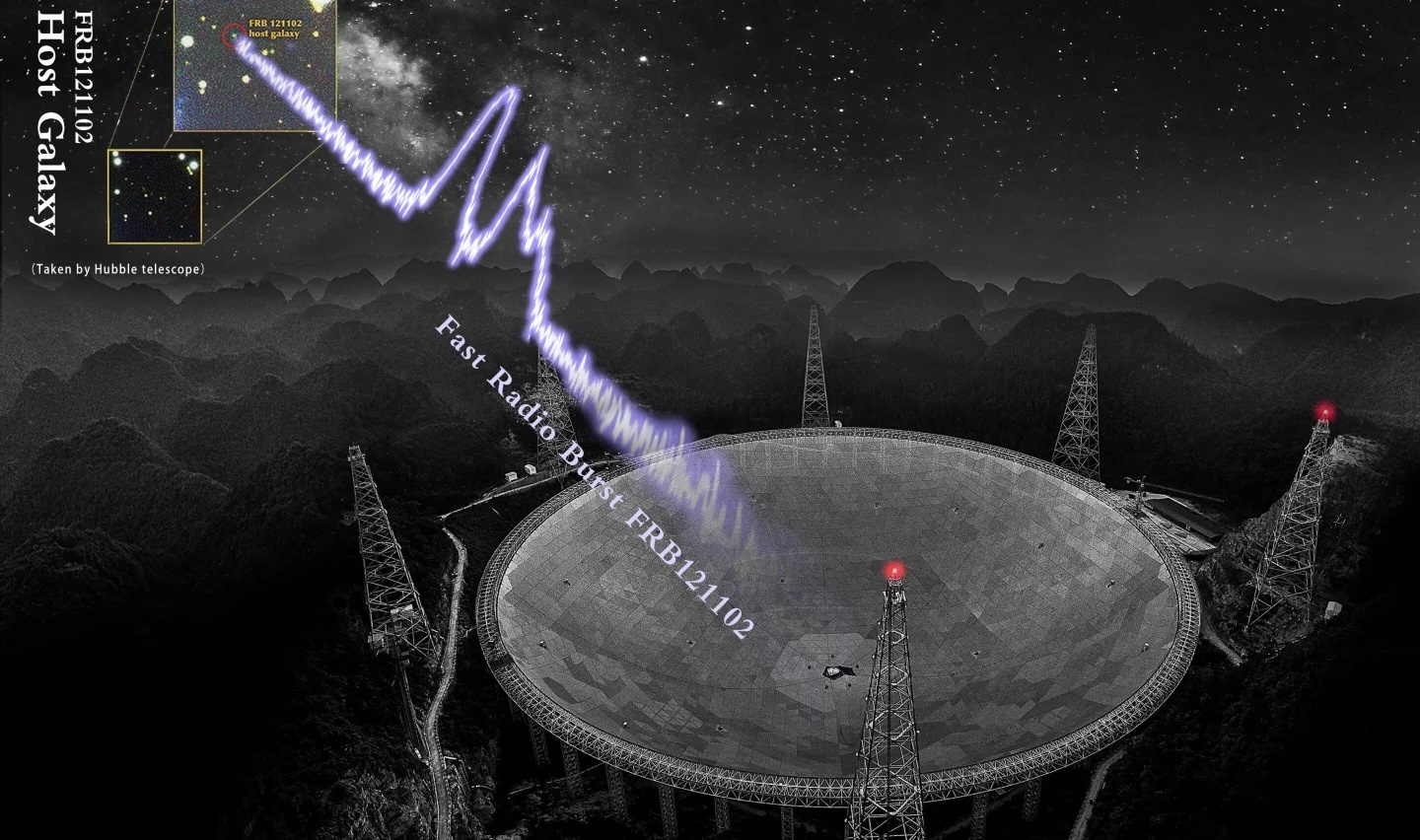With better computers comes more battery imagery. Or at least that’s true most of the time. Supercomputers are extraordinarily good at image processing, so it’s normally worth it when a new algorithm comes along that they can turn their attention to. That’s exactly what happened with an algorithm recently developed by Ph.D. student Frits Sweijen and his colleagues at Leiden University. They used several supercomputers’ image processing power to simulate and enhance the resolution of radio images captured by the International LOFAR telescope.
Continue reading “A Supercomputer Gives Better Focus to Blurry Radio Images”Fast Radio Bursts can now be Tracked in Real-Time
Located in the Okanagan Valley outside of Penticton, British Columbia, there is a massive radio observatory dedicated to observing cosmic radio phenomena. It’s called the Canadian Hydrogen Intensity Mapping Experiment (CHIME), a cylindrical parabolic radio telescope that looks like what snowboarders would call a “half-pipe.” This array is part of the Dominion Radio Astrophysical Observatory (DRAO), overseen by the National Research Council (NRC).
Originally, the observatory was meant to detect radio waves from neutral hydrogen gas in the early Universe. Today, it is used for other objectives, such as detecting and studying Fast Radio Bursts (FRBs). Since it became operational, CHIME scientists have been busy sorting through terabytes of data to pinpoint signals, often finding several in a single day. To assist with all this data-mining and coordinate CHIMEs efforts with other facilities worldwide, scientists from McGill University have developed a new system for sharing the enormous amount of data CHIME generates.
Continue reading “Fast Radio Bursts can now be Tracked in Real-Time”If you had Radio Telescopes for Eyes, one of the Biggest Things in the sky Would be a jet of Material Blasting out of a Nearby Galaxy

One concept that’s difficult to visualize is the apparent size of objects in the sky. No the actual size of an object, but rather the amount of area an object covers in the sky. Apparent size depends on an object’s actual size and its distance from us. For example, the Sun is about 400 times wider than the Moon, but also about 400 times more distant, so the Sun and Moon have roughly the same apparent size.
Continue reading “If you had Radio Telescopes for Eyes, one of the Biggest Things in the sky Would be a jet of Material Blasting out of a Nearby Galaxy”Twin Stars Prove Einstein at Least 99.99% Right

More than a hundred years have passed since Einstein formalized his theory of General Relativity (GR), the geometric theory of gravitation that revolutionized our understanding of the Universe. And yet, astronomers are still subjecting it to rigorous tests, hoping to find deviations from this established theory. The reason is simple: any indication of physics beyond GR would open new windows onto the Universe and help resolve some of the deepest mysteries about the cosmos.
One of the most rigorous tests ever was recently conducted by an international team of astronomers led by Michael Kramer of the Max Planck Institute for Radio Astronomy (MPIfR) in Bonn, Germany. Using seven radio telescopes from across the world, Kramer and his colleagues observed a unique pair of pulsars for 16 years. In the process, they observed effects predicted by GR for the first time, and with an accuracy of at least 99.99%!
Continue reading “Twin Stars Prove Einstein at Least 99.99% Right”The Next Generation Very Large Array Would be 263 Radio Telescopes Spread Across North America

The iconic Very Large Array (VLA) in New Mexico has been at the forefront of astrophysical research since its dedication in 1980. The Y-shaped configuration of 27 radio astronomy dishes have made key discoveries about the cosmos, while becoming a part of pop-culture in several high-profile movies.
But the aging array is due for an upgrade, one that would take advantage of advanced technology. So says the latest Decadal Survey, published by the U.S. National Academy of Sciences, which presents a consensus among researchers on the most important scientific goals and missions for the upcoming decade.
Continue reading “The Next Generation Very Large Array Would be 263 Radio Telescopes Spread Across North America”Something Really Wants our Attention. One Object Released 1,652 Fast Radio Bursts in 47 Days
The energetic phenomena known as Fast Radio Bursts (FRBs) are one of the greatest cosmic mysteries today. These mysterious flashes of light are visible in the radio wave part of the spectrum and usually last only a few milliseconds before fading away forever. Since the first FRB was observed in 2007, astronomers have looked forward to the day when instruments of sufficient sensitivity would be able to detect them regularly.
That day has arrived with the completion of the 500-Meter FAST Radio Telescope (aka. Tianyan, “Eye of Heaven”). Since it commenced operations, this observatory has vastly expanded the number of detected FRBs. In fact, according to research led by the National Astronomical Observatories of the Chinese Academy of Sciences (NAO/CAS), the observatory detected a total of 1,652 independent bursts from a single source in 47 days.
Continue reading “Something Really Wants our Attention. One Object Released 1,652 Fast Radio Bursts in 47 Days”What’s Causing the Mysterious Radio Waves Coming From the Center of the Milky Way?

The center of the Milky Way is a mysterious place. Astronomers think there’s a supermassive black hole there, though it could be dark matter instead. The region is densely packed with stars, dominated by red giants. And because of all the dust between Earth and the galactic center, we can’t see anything with visible light, ultraviolet light, or low-energy x-rays.
But we can detect radio waves, and there are some unexplained ones coming from the center of the galaxy, and adding to the mystery.
Continue reading “What’s Causing the Mysterious Radio Waves Coming From the Center of the Milky Way?”A Magnetic Tunnel Surrounds the Earth

What if our eyes could see radio waves?
If we could, we might be able to look up into the sky and see a tunnel of rope-like filaments made of radio waves. The structure would be about 1,000 light-years long and would be about 350 light-years away.
This tunnel explains two of the brightest radio features in the sky.
Continue reading “A Magnetic Tunnel Surrounds the Earth”China’s FAST Telescope Could Detect Self-Replicating Alien Probes
One of the most challenging questions to answer when confronting the Fermi Paradox is why exponentially scaling technologies haven’t taken over the universe by now. Commonly known as von Neumann probes, the idea of a self-replicating swarm of extraterrestrial robots has been a staple of science fiction for decades. But so far, there has never been any evidence of their existence outside the realm of fiction. That might be because we haven’t spent a lot of time looking for them – and that could potentially change with the new Five-hundred-meter Aperture Spherical Radio Telescope (FAST). According to some recent calculations, the massive new observational platform might be able to detect swarms of von Neumann probes relatively far away from the sun.
Continue reading “China’s FAST Telescope Could Detect Self-Replicating Alien Probes”ALMA’s new Receivers Will let it see Longer Wavelengths, Peering Closer to the Beginning of the Universe

The ALMA telescope is getting a new set of receivers, enabling it to detect wavelengths down to 8.5 mm. These wavelengths are crucial for observations of the transformative epoch of reionization, when the first stars to appear in the universe unleashed a fury of radiation.
Continue reading “ALMA’s new Receivers Will let it see Longer Wavelengths, Peering Closer to the Beginning of the Universe”



